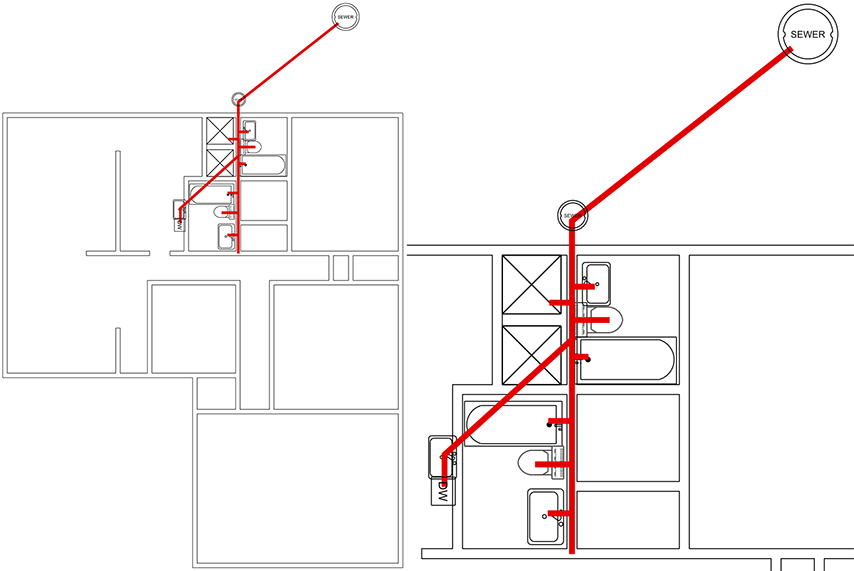
- #PLUMBING ROUGH IN SLAB DIAGRAMS HOW TO#
- #PLUMBING ROUGH IN SLAB DIAGRAMS INSTALL#
- #PLUMBING ROUGH IN SLAB DIAGRAMS FREE#
In slab-on-grade construction, a concrete slab serves as a floor (and at times the foundation) for the structure above.

#PLUMBING ROUGH IN SLAB DIAGRAMS HOW TO#
This article details how to locate the pipes accurately, pitch them correctly, and backfill the excavation so the slab wont crack. Everything must be buried in the dirt prior to pouring the concrete.
#PLUMBING ROUGH IN SLAB DIAGRAMS FREE#
Take another 3-inch diameter pipe and run it to the floor level to serve as the tub or shower drain.įor more information on plumbing your bathroom, you may reach out to our Sydney based plumbing specialists for a free consultation.Synopsis: With a slab-on-grade foundation, there are no floor joists in which to run plumbing pipes. Use an elbow (90 degrees) to make it turn upward. Take a 3-inch diameter pipe and run it to the tub or shower drain location.

At this point, the drainage is fully ready for toilet installation. The flange should be installed above the floor surface. Take an elbow (90 degrees) to join the split pipes such that one length will go upward to where the toilet will be install. Next, split a 3-inch diameter pipe in half. This pipe will work as the drain for your bathroom sink.
#PLUMBING ROUGH IN SLAB DIAGRAMS INSTALL#
Next, install a pipe measuring 2 inches in diameter and allow it to run above the floor to a height of 18 inches. Turn the pipe upward using an angle of 90 degrees. Next, run a pipe measuring 2 inches in diameter to where the sink will be located. Next, fit in a 3 to 2 inches adapter onto the other pipe. Take a pipe measuring 3-inch in diameter and install it into one of the split pipes. Split the pipe with a pipe splitter to get two pipes. Use another elbow (90 degrees) to make the pipe turn horizontal again. Use cement that is specially made for use with PVC pipes when making the connections. Next, connect each pipe with two female adapters. Make a turn of 90 degrees upward such that it will reach a level below the floor. Now run a 3-inch diameter pipe (PVC) to the location of the toilet drainage. Use cement and PVC cleaner as per the instructions of the manufacturer when installing the pipe. This will allow for water to drain downhill toward the connector. The connection point for the connector should be made at the bathroom’s floor level. Take a 3-inches pipe T-connector (PVC) and insert it to the opening you made on the stack.


You’ll need a big pipe cutter for opening the main stack. The T-connector will create a branch drainage that will carry the wastewater from the sink, toilet, and tub or shower to the main sewer line. Once you’ve created the map for the rough-in layout, get a pipe T-connector and install it to the sewer stack. Use a pencil to sketch the bathroom and the pipe network, including the pipe sizes for every branch. When drawing the layout, consider where the bath or shower, sink, and toilet will be located. Draw the path that the drain and water supply lines will take to get to the bathroom.Īlso, draw the location where the pipes will be installed in the bathroom. It requires some specialized tools and plumbing skills to get it right, says our licensed emergency plumbing Sydney specialists.įirst, create a map that will represent the rough-in layout for your bathroom. This process is usually done when setting up a new bathroom. Rough-in bathroom plumbing involves preparing the pipes and drain lines for connection once a bathroom fixture is put in place. These bathroom fixtures are fed with cold and hot water supply lines that branch toward the bathroom fixtures.


 0 kommentar(er)
0 kommentar(er)
